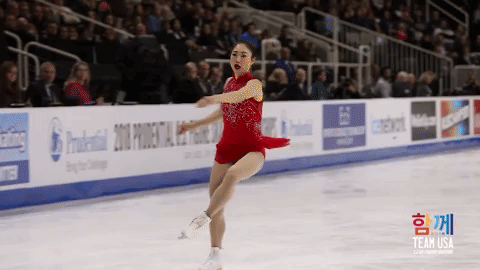
I concluded The science of the Winter Olympics from ASAPScience Part 1 with a program note.
I'll resume this series after a series of three holidays, Darwin Day, Valentine's Day, and Paczki Day. Stay tuned!I still plan on resuming my series featuring ASAPScience's Olympic science videos, but today I take a different tack with two videos about figure skating from Vox. I begin with Why the triple axel is such a big deal.
Triple axels can turn skaters into legends. This is why.I was wondering when someone would compare Mirai Nagasu and Tonya Harding. This video finally did.
...
In this episode of Vox Almanac, Phil Edwards explores the triple axel and why it's such a big deal. The figure skating jump is legendary among ice skaters, from Tonya Harding's 1991 triple axel to modern icon Mirai Nagasu's attempts in competition. It turns out that the physics of the triple axel makes it a uniquely difficult jump — and one worth learning about.
As a forward-edge jump, the mechanics of a triple axel requires technical acumen from skaters while they still try to maintain an artistically interesting performance. Pioneers like Midori Ito and Tonya Harding had to jump, ramp up rotation speed, and then land all while trying to look good. This effort set them apart from competitors like Nancy Kerrigan, but it wasn't easy to land a triple axel in competition.
And that difficulty might be why the triple axel endures as the pinnacle of figure skating performance — and why it's sure to light up the 2018 Winter Olympics as well.
...
Note: The video states Mirai Nagasu was the second American to land a triple axel in competition (this was recorded before her Olympic success). In 2005, American Kimmy Miessner completed a triple axel in national competition, though not world competition.
Nagasu also figures in the next video from Vox, How figure skating scoring rewards risk over artistry.
The new figure skating scoring system is complicated and controversial. Here's how it works.I used to be a marching band judge, so the debate over artistry versus technical merit versus clean execution and how to score all of them looks very familiar to me. The same debate goes on in the marching arts and has for decades. I wish the figure skating community luck in resolving it; they'll need it.
...
At the Pyeongchang 2018 Winter Olympics, Mirai Nagasu became the first American woman to land a triple axel in an Olympic event, just the third woman ever to accomplish this feat. She failed to cleanly land the same jump at the 2018 US Figure Skating Championship, in San Jose California, but she still received 6.07 points for the jump, almost two points more than her teammate's perfect double axel, which received 4.09 points. Figure skating score is complicated, and the new scoring system has changed how competitors skate. But how does it work?
I'll be back with more about the Olympics after Lunar New Year and reports on the nominees of the Golden Reel Awards. Stay tuned.
No comments:
Post a Comment